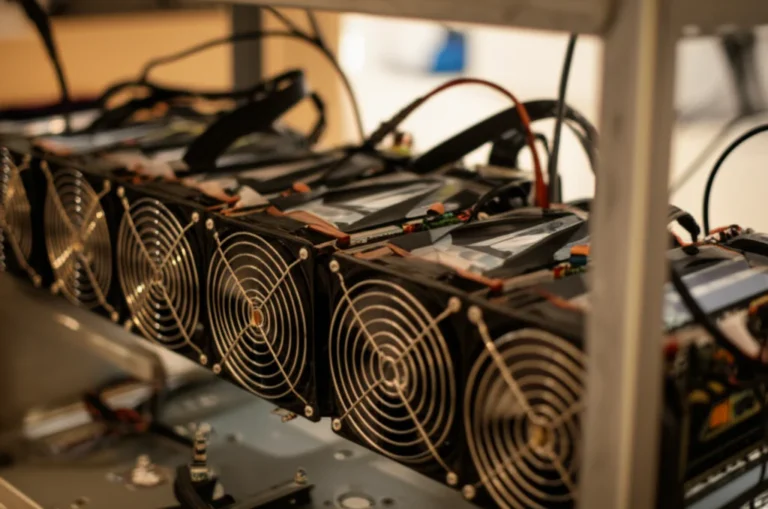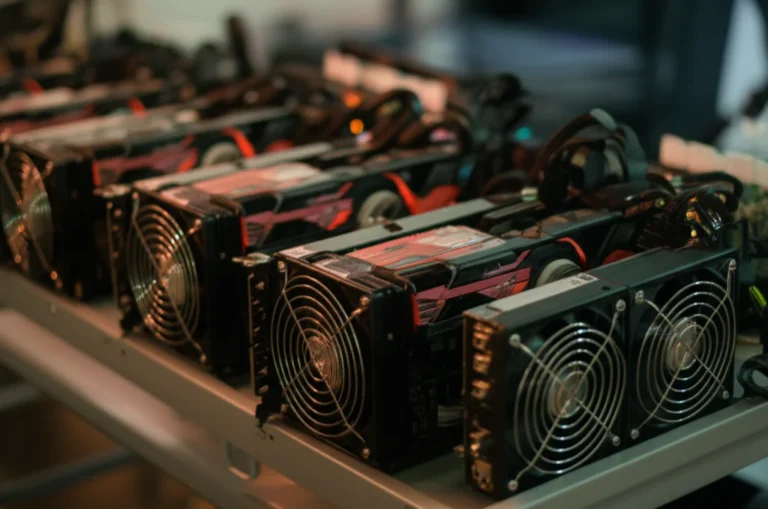Support our educational content for free when you purchase through links on our site. Learn more
Crypto Mining at Home: 5 Steps to Success? ⛏️
Ever dreamed of striking digital gold from your living room? Home Bitcoin mining once promised easy riches, but the reality is far more nuanced. While directly mining Bitcoin at home is now largely impractical due to intense competition and energy costs, other cryptocurrencies offer possibilities. This comprehensive guide from Coin Value™ explores the evolution of home mining, the essential hardware and software, profitability considerations, and the crucial aspects of security and legality. We’ll equip you with the knowledge to decide if home cryptocurrency mining is right for you—and if so, how to do it successfully. Remember that one key factor, often overlooked, is the significant impact of electricity costs on profitability. Are you ready to learn if you can really strike it rich?
Key Takeaways
- Home Bitcoin mining is extremely challenging in 2024 due to high difficulty and energy costs. Mining other cryptocurrencies with ASIC-resistant algorithms might be more feasible, but profitability is not guaranteed.
- Essential hardware includes ASIC miners (for Bitcoin, though less practical at home) and GPUs (for other cryptocurrencies). Consider power consumption and cooling carefully.
- Software setup involves mining software and a secure wallet. Choose reputable software and prioritize security.
- Mining pools can increase your chances of earning rewards, but choose reputable ones. Research and compare different pools before joining.
- Legal and environmental considerations are crucial. Ensure mining is legal in your area and consider the environmental impact of your operation.
👉 Shop ASIC Miners on:
👉 Shop GPUs on:
- NVIDIA GeForce RTX 30 Series: Amazon Search Results for NVIDIA GeForce RTX 30 Series | NVIDIA Official Website
- AMD Radeon RX 6000 Series: Amazon Search Results for AMD Radeon RX 6000 Series | AMD Official Website
Table of Contents
The Evolution of Home Bitcoin Mining: From CPUs to ASICs
What is Bitcoin Mining and How Does it Work?
Why Bitcoin Mining Still Matters: The Importance of Decentralization
Is Home Bitcoin Mining Profitable in 2024? A Realistic Look at the Numbers
1. Essential Hardware for Home Bitcoin Mining: ASIC Miners, GPUs, and More
2. Software and Setup: Getting Your Mining Rig Up and Running
3. Choosing a Mining Pool: Maximizing Your Earnings and Reducing Risk
4. Power Consumption and Cooling: Keeping Your Miners Running Efficiently
5. Security Considerations: Protecting Your Mining Operation from Threats
The Environmental Impact of Home Bitcoin Mining: Energy Consumption and Sustainability
Legal and Regulatory Aspects of Home Bitcoin Mining: Where is it Allowed?
Can You Really Mine Bitcoin at Home? A Practical Guide for Beginners
Troubleshooting Common Home Bitcoin Mining Problems
The Future of Home Bitcoin Mining: Trends and Predictions
Quick Tips and Facts 🤔
Before you dive into the exciting (and potentially lucrative!) world of home Bitcoin mining, let’s get some quick facts straight. Think of us as your friendly neighborhood Coin Value™ experts, here to guide you through this wild ride!
- Bitcoin mining is competitive: You’re not just competing against your neighbor; you’re up against massive mining farms with specialized equipment. This means profitability can be challenging.
- Electricity costs matter: Mining consumes significant energy. High electricity prices can quickly eat into your profits—or even turn them into losses. Consider your energy costs before you start.
- Hardware is expensive: You’ll need specialized equipment, and the initial investment can be substantial. Don’t jump in without a solid financial plan.
- Regulation varies: Bitcoin mining legality differs across countries. Make sure it’s legal in your area before investing time and money. Learn more about the legal landscape by checking out our article on Unlock Your Coin’s Hidden Value! for a broader understanding of coin regulations.
- It’s not a get-rich-quick scheme: While Bitcoin mining can be profitable, it requires patience, research, and a bit of luck. Don’t expect overnight riches.
The Evolution of Home Bitcoin Mining: From CPUs to ASICs 💻➡️⛏️
Remember the early days of Bitcoin? Back then, you could mine using your home computer’s CPU! Sounds crazy now, right? But as Bitcoin’s popularity exploded, so did the difficulty of mining. This led to the rise of GPUs (graphics processing units), offering significantly more processing power. However, even GPUs were eventually outmatched.
Enter ASICs (Application-Specific Integrated Circuits). These specialized chips are designed solely for Bitcoin mining, offering unparalleled efficiency and hash rate. This made home mining significantly less viable for Bitcoin itself, as large-scale operations with thousands of ASICs dominated the landscape. However, mining other cryptocurrencies at home remains a possibility, depending on the algorithm and your hardware. We’ll explore this further in the sections below.
What is Bitcoin Mining and How Does it Work? 🤔
Bitcoin mining is the process of verifying and adding transactions to the Bitcoin blockchain. Miners use powerful computers to solve complex mathematical problems. The first miner to solve the problem gets to add the next “block” of transactions to the blockchain and receives a reward in Bitcoin. This process secures the network and ensures the integrity of transactions. Think of it as a digital gold rush, but instead of panning for gold, you’re solving complex equations! For a deeper dive into the technical aspects, check out Investopedia’s excellent explanation of how Bitcoin mining works.
Why Bitcoin Mining Still Matters: The Importance of Decentralization 🌐
Despite the shift towards large-scale mining operations, Bitcoin mining remains crucial for the entire cryptocurrency ecosystem. Why? Decentralization. A decentralized network is more resistant to censorship and manipulation. If a single entity controlled Bitcoin mining, it could potentially control the entire network. The continued participation of individual miners, even on a smaller scale, helps maintain this vital decentralization.
Is Home Bitcoin Mining Profitable in 2024? A Realistic Look at the Numbers 📊
Let’s be brutally honest: mining Bitcoin at home for profit in 2024 is extremely challenging. The difficulty has skyrocketed, and the energy costs often outweigh the rewards. However, mining other cryptocurrencies, especially those with algorithms resistant to ASICs, might be more feasible. The profitability depends on several factors:
- The cryptocurrency’s price: A higher price means higher potential profits.
- The mining difficulty: A higher difficulty means less chance of earning rewards.
- Your hardware’s efficiency: More efficient hardware means lower energy costs.
- Your electricity costs: Lower electricity costs are crucial for profitability.
We’ll explore these factors in more detail in the following sections. Remember, always do your research and use a mining profitability calculator (like the one offered by WhatToMine) to get a realistic estimate before investing.
1. Essential Hardware for Home Bitcoin Mining: ASIC Miners, GPUs, and More 🛠️
For Bitcoin mining, ASIC miners are the most efficient option, though their high cost and energy consumption make them less practical for home use. For other cryptocurrencies, GPUs can be a viable alternative, especially for those with ASIC-resistant algorithms. Here’s a breakdown:
- ASIC Miners: Brands like Canaan produce ASIC miners specifically designed for high-throughput mining. However, these are typically expensive and require significant power.
- GPUs: High-end graphics cards from NVIDIA (e.g., GeForce RTX 30 series) and AMD (e.g., Radeon RX 6000 series) can be used for mining certain cryptocurrencies. They are generally more affordable than ASICs but less efficient.
- CPUs: While possible, CPUs are generally not efficient enough for profitable mining.
Choosing the right hardware depends on the cryptocurrency you plan to mine and your budget. Remember to consider power consumption and cooling requirements.
2. Software and Setup: Getting Your Mining Rig Up and Running ⚙️
Once you have your hardware, you need the right software. This typically involves:
- Mining software: This software controls your hardware and connects it to a mining pool. Popular options include NiceHash Miner, TeamRedMiner, and others depending on your chosen cryptocurrency and hardware.
- Wallet software: You’ll need a wallet to store your mined cryptocurrency securely. Consider hardware wallets for enhanced security.
Setting up your mining rig can be a bit technical. Consult detailed guides and tutorials specific to your chosen hardware and cryptocurrency. Many online resources offer step-by-step instructions.
3. Choosing a Mining Pool: Maximizing Your Earnings and Reducing Risk 🤝
Mining pools combine the hashing power of multiple miners, increasing your chances of solving a block and earning rewards. Popular pools include Slush Pool, AntPool, and F2Pool. Choosing a reputable pool is crucial to ensure fair payouts and avoid scams.
4. Power Consumption and Cooling: Keeping Your Miners Running Efficiently ❄️
Mining hardware generates significant heat and consumes a lot of electricity. Proper cooling is essential to prevent overheating and damage. Consider:
- Efficient cooling solutions: High-quality fans, heatsinks, and potentially liquid cooling systems.
- Energy-efficient hardware: Choose hardware with a lower power consumption per hash rate.
- Monitoring power usage: Track your energy consumption to manage costs effectively.
5. Security Considerations: Protecting Your Mining Operation from Threats 🔒
Security is paramount in cryptocurrency mining. Consider these aspects:
- Secure your hardware: Protect your mining rigs from physical theft and unauthorized access.
- Use strong passwords: Choose strong, unique passwords for all your accounts.
- Keep your software updated: Regular updates patch security vulnerabilities.
- Beware of scams: Be cautious of suspicious offers and avoid investing in unverified projects.
The Environmental Impact of Home Bitcoin Mining: Energy Consumption and Sustainability 🌎
Bitcoin mining’s energy consumption is a significant concern. While large-scale operations often utilize renewable energy sources, home mining can contribute to increased energy demand. Consider the environmental impact and explore ways to minimize your carbon footprint, such as using energy-efficient hardware and sourcing renewable energy.
Legal and Regulatory Aspects of Home Bitcoin Mining: Where is it Allowed? ⚖️
The legality of Bitcoin mining varies significantly across countries. Some countries have outright bans, while others have strict regulations. Research your local laws and regulations before starting any mining operation. Investopedia provides a good overview of legal and regulatory challenges facing Bitcoin mining globally.
Can You Really Mine Bitcoin at Home? A Practical Guide for Beginners 🏠
While directly mining Bitcoin at home is unlikely to be profitable in 2024, mining other cryptocurrencies is still a possibility. This requires research, careful planning, and a realistic understanding of the challenges involved. Remember to factor in hardware costs, electricity prices, and the potential for fluctuating cryptocurrency values. Our guide above provides a solid foundation for your journey.
Troubleshooting Common Home Bitcoin Mining Problems 🛠️
Mining can present various challenges. Common issues include:
- Hardware malfunctions: Regular maintenance and monitoring are crucial.
- Software errors: Consult online resources and forums for troubleshooting assistance.
- Network connectivity problems: Ensure a stable internet connection.
- Overheating: Implement proper cooling solutions.
Don’t hesitate to seek help from online communities and forums dedicated to cryptocurrency mining.
The Future of Home Bitcoin Mining: Trends and Predictions🔮
The future of home Bitcoin mining is uncertain. While large-scale operations will likely continue to dominate Bitcoin mining, the landscape for other cryptocurrencies remains dynamic. Technological advancements, changes in regulations, and cryptocurrency price fluctuations will all play a role in shaping the future of home mining. Stay informed and adapt your strategy accordingly.
Conclusion 🏁
So, can you profitably mine Bitcoin at home in 2024? The short answer is: probably not. The intense competition and high energy costs make it a challenging endeavor. However, mining other cryptocurrencies with ASIC-resistant algorithms might be more feasible, depending on your hardware, electricity costs, and the chosen cryptocurrency’s price. Remember, thorough research, realistic expectations, and a well-defined plan are crucial for success. Don’t treat this as a get-rich-quick scheme; instead, approach it as a potentially rewarding, albeit risky, investment requiring patience and technical expertise. We hope this comprehensive guide has equipped you with the knowledge to make informed decisions. Now, go forth and mine (responsibly)!
Recommended Links 🔗
Want to delve deeper? Here are some resources to help you on your mining journey:
👉 Shop ASIC Miners on:
👉 Shop GPUs on:
- NVIDIA GeForce RTX 30 Series: Amazon Search Results for NVIDIA GeForce RTX 30 Series | NVIDIA Official Website
- AMD Radeon RX 6000 Series: Amazon Search Results for AMD Radeon RX 6000 Series | AMD Official Website
Recommended Books on Amazon:
- Mastering Bitcoin: Programming the Open Blockchain
- Bitcoin and Cryptocurrency Technologies: A Comprehensive Introduction
FAQ ❓
What are the best cryptocurrencies to mine at home for profit?
The “best” cryptocurrency to mine depends on several factors, including your hardware, electricity costs, and the cryptocurrency’s price and mining difficulty. Cryptocurrencies with ASIC-resistant algorithms (like those mentioned in the Bravenewcoin article) are often more suitable for home mining. However, profitability is constantly changing, so continuous monitoring is essential. Use profitability calculators to assess your options.
What factors should I consider when choosing a cryptocurrency to mine?
Consider the cryptocurrency’s price, mining difficulty, the algorithm used (ASIC-resistant or not), your hardware’s capabilities, and your electricity costs. Use online calculators to estimate potential profitability.
How much electricity does crypto mining at home typically consume?
Electricity consumption varies greatly depending on your hardware. ASIC miners are notorious for high energy consumption, while GPUs consume less. It’s crucial to monitor your energy usage and factor electricity costs into your profitability calculations. Expect significant increases in your electricity bill.
What is the most profitable crypto mining equipment for home use?
There’s no single “most profitable” equipment. The best choice depends on the cryptocurrency you’re mining and your budget. High-end GPUs are often a more practical option for home mining than ASICs, especially for ASIC-resistant cryptocurrencies. However, even with GPUs, profitability is not guaranteed.
Read more about “How to Mine Bitcoin on Android: 7 Essential Tips for Success! 📱 …”
Can I mine cryptocurrency at home with a gaming laptop?
You can try, but it’s unlikely to be profitable. Gaming laptops typically have less powerful GPUs than dedicated mining rigs, and their cooling systems might not be sufficient for sustained mining operations. The effort and electricity cost will likely outweigh any potential rewards.
Read more about “The Ultimate Bitcoin Mining Rig: 10 Essential Components You Need to Know … ⛏️”
What are the tax implications of crypto mining at home?
The tax implications vary depending on your location. In many jurisdictions, cryptocurrency mining income is considered taxable. Consult a tax professional to understand your specific tax obligations.
Read more about “How to Mine Bitcoin at Home for Free: 7 Smart Strategies! 💡 …”
How do I set up a crypto mining rig at home for beginners?
Setting up a mining rig involves several steps: acquiring hardware (GPUs or ASICs), installing mining software (like NiceHash Miner or TeamRedMiner), joining a mining pool, and configuring your hardware for optimal performance. Numerous online tutorials and guides can help you through the process. Start with smaller-scale operations to gain experience before investing heavily.
Read more about “What’s the Best Crypto to Mine at Home? 10 Top Picks for 2025! 🚀”
What are the security risks of crypto mining at home and how to mitigate them?
Security risks include hardware theft, malware infections, and unauthorized access to your mining software and wallets. Mitigate these risks by securing your hardware physically, using strong passwords, keeping your software updated, and using reputable mining pools and wallets. Consider using hardware wallets for enhanced security.
How does crypto mining at home affect the value of collectible coins and overall coin values?
Home crypto mining has a negligible direct impact on the value of collectible coins or overall coin values. The value of collectible coins is determined by factors like rarity, condition, historical significance, and market demand. Cryptocurrency mining primarily affects the value of the cryptocurrencies being mined, not traditional collectible coins.
Reference Links 📚
- Investopedia: How Does Bitcoin Mining Work?
- Bravenewcoin: Crypto Assets You Can Mine From a Home Computer
- Canaan: Canaan Official Website
- NiceHash: NiceHash Miner
- TeamRedMiner: TeamRedMiner
- Slush Pool: Slush Pool
- AntPool: AntPool
- F2Pool: F2Pool
- WhatToMine: WhatToMine
- NVIDIA: NVIDIA Official Website
- AMD: AMD Official Website






